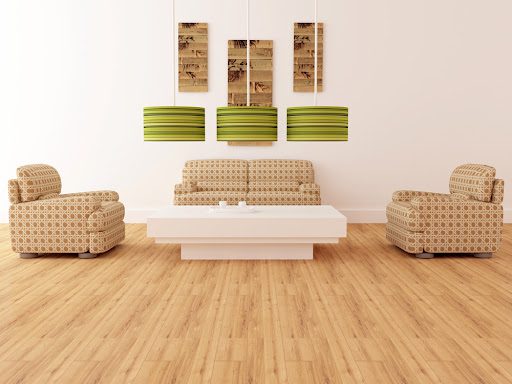The global bamboo flooring market is already worth a staggering US$1.249 billion, and is estimated to exceed the US$154.9 billion mark by the end of 2026! In recent years, bamboo flooring has gradually attracted a lot of attention, especially from homeowners who are keen on pursuing environmentally friendly and sustainable building materials.
Not only is bamboo easy to maintain and install, but it also combines modern and natural beauty, which can effectively increase the real estate value of your home. It’s worth noting that the price of bamboo flooring is even comparable to other popular flooring types. Compared to trees, bamboo culms possess a five to six harvest cycle, which greatly enhances their sustainability benefits. As flooring, bamboo shares many similarities with hardwood flooring, while also being unique.
The Many Benefits of Bamboo Flooring
While bamboo is attractive to consumers who prefer a natural, renewable building material, its many benefits make it an ideal choice for anyone looking for a flooring option.
Environmentally Friendly
Bamboo flooring is extremely easy to maintain, with regular sweeping and vacuuming sufficient to remove dust and debris. Occasional cleaning with a bamboo floor cleaner or a mild soap and water solution will give the floor a fresh new look.
Great Restoration Potential
As time passes, bamboo will inevitably suffer from problems such as scratches and color changes. Fortunately, however, the surface of a bamboo floor can be easily repaired by sanding and sealing it with a new coating. By sanding the surface again, the floor is revitalized to an even and flawless finish, thus effectively preventing future damage. Please note that engineered bamboo floors are not suitable for refinishing.
Durable
Bamboo flooring performs well in high-traffic areas such as living rooms, kitchens and entryways. Its natural abrasion resistance allows it to withstand the impact of walking and falling objects, and Strand Woven Bamboo Flooring is made from interwoven grass fibers that form a unique interlocking pattern that is three times stronger than other types of bamboo flooring.
DIY Friendly Products
For those who love to DIY, the cost of installing bamboo flooring depends entirely on the type you choose. For example, floating bamboo flooring utilizes a “click-lock” system that makes the installation process much easier and can be done without professional assistance. It is quick and easy to install, and allows the floor to expand and contract as the humidity levels in the room change.
Excellent resistance to pests
Bamboo itself is rarely infested by pests. Even during the harvest season, the use of insecticides is virtually eliminated. Some of the chemicals used to treat bamboo flooring are even indigestible to termites. Overall, most types of bamboo flooring are pet-proof. In addition, bamboo is not friendly to dust mites and can effectively repel dust and pollen, making it undoubtedly the best choice for allergy-prone homeowners.
Where Flooring Falls Short
Of course, bamboo flooring has some of the same shortcomings as hardwood flooring. Both are prone to scratches and therefore require a specialized sealant for waterproofing. For those interested in choosing bamboo flooring, these factors should be taken into consideration.
Prone to Scratches
Despite its excellent durability, bamboo is still susceptible to scratches on its surface, as is the case with most wooden floors. Charred bamboo flooring, in particular, is more susceptible to scratches due to its darker tone. It is advisable to lay felt pads under furniture and repair bamboo flooring in due course, so as to prolong the life of the floor and minimize scratches.
Restricted style
Although bamboo has become a representative of fashionable flooring materials, but its style style still has some limitations. From an aesthetic point of view, bamboo flooring can indeed be adapted to a variety of different decorating styles, but it is most suitable for modern and Scandinavian design styles. Most bamboo flooring is only available in vertical and horizontal textures and in a relatively limited number of finishes and shades.


